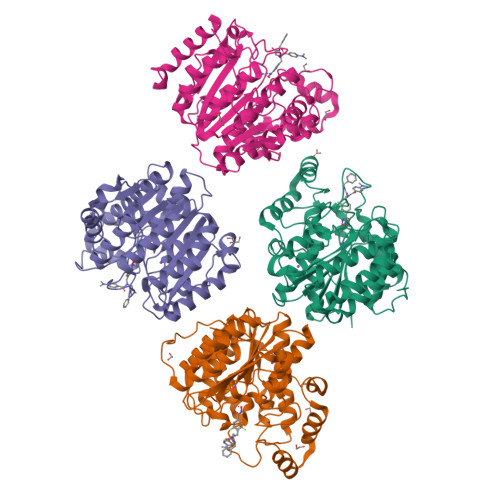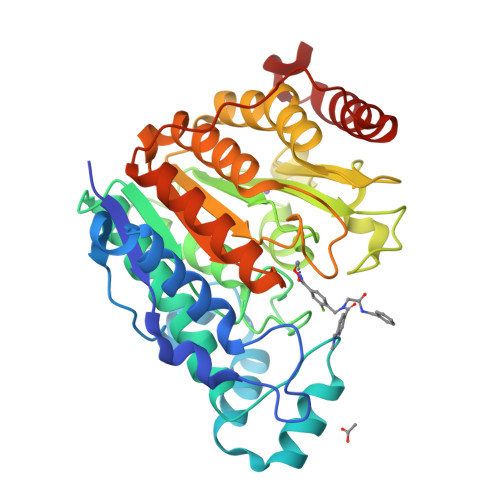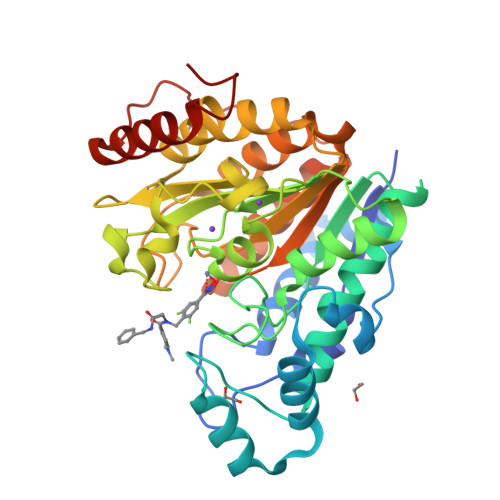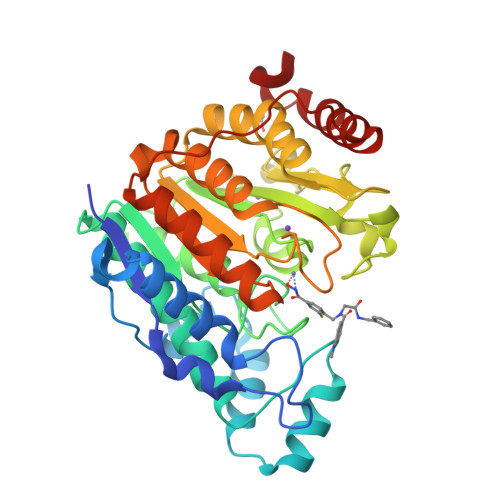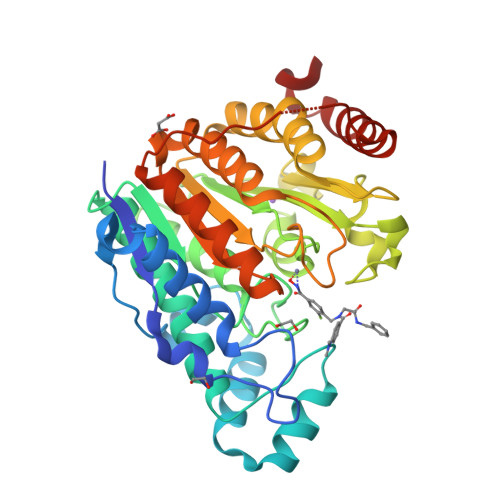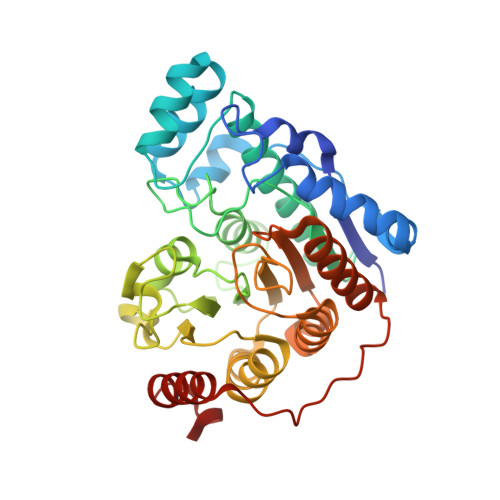Development of Fluorinated Peptoid-Based Histone Deacetylase (HDAC) Inhibitors for Therapy-Resistant Acute Leukemia.
Ressing, N., Schliehe-Diecks, J., Watson, P.R., Sonnichsen, M., Cragin, A.D., Scholer, A., Yang, J., Schaker-Hubner, L., Borkhardt, A., Christianson, D.W., Bhatia, S., Hansen, F.K.(2022) J Med Chem 65: 15457-15472
- PubMed: 36351184
- DOI: https://doi.org/10.1021/acs.jmedchem.2c01418
- Primary Citation of Related Structures:
7U8Z - PubMed Abstract:
Using a microwave-assisted protocol, we synthesized 16 peptoid-capped HDAC inhibitors (HDACi) with fluorinated linkers and identified two hit compounds. In biochemical and cellular assays, 10h stood out as a potent unselective HDACi with remarkable cytotoxic potential against different therapy-resistant leukemia cell lines. 10h demonstrated prominent antileukemic activity with low cytotoxic activity toward healthy cells. Moreover, 10h exhibited synergistic interactions with the DNA methyltransferase inhibitor decitabine in AML cell lines. The comparison of crystal structures of HDAC6 complexes with 10h and its nonfluorinated counterpart revealed a similar occupation of the L1 loop pocket but slight differences in zinc coordination. The substitution pattern of the acyl residue turned out to be crucial in terms of isoform selectivity. The introduction of an isopropyl group onto the phenyl ring provided the highly HDAC6-selective inhibitor 10p , which demonstrated moderate synergy with decitabine and exceeded the HDAC6 selectivity of tubastatin A.
Organizational Affiliation:
Pharmaceutical Institute, Pharmaceutical and Cell Biological Chemistry, University of Bonn, An der Immenburg 4, 53121Bonn, Germany.








